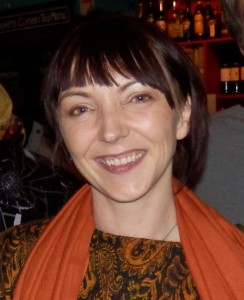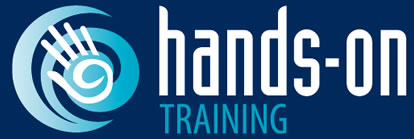 In this article Earle Abrahamson asked Jenni Wren to reflect upon and discuss dancing, dancers and dance therapy. Jenni takes us through the promenade of the dancer as she explores pirouettes, pain and petrissage.
In this article Earle Abrahamson asked Jenni Wren to reflect upon and discuss dancing, dancers and dance therapy. Jenni takes us through the promenade of the dancer as she explores pirouettes, pain and petrissage.
Recently I’ve been writing a blog on dance and injury, mostly from the injured dancers point of view, my own horror of dancing on injury for 9 years and literally having to diagnose the problem myself, find a specialist surgeon and getting the correct treatment. It has been a journey that has changed me as a dancer, changed me as a practitioner and made me feel quite strongly about dancers having access to the right treatment and practitioners having the right knowledge to treat a dancer.
My dance, choreography and massage practice have developed alongside each other over a period of 17 years. It’s easy to forget the wealth of knowledge that is in there, or the things that go so quickly through my head when assessing, diagnosing and treating a dancer, until I have to explain it. Even then I can overwhelm myself!
There is an increasing amount of interest out there on treating dancers but what I have discovered is there is a lack of good treatment available for them and a lack of practitioners who really know what a dancer does or needs. So as masseurs, physical therapists and hands-on practitioners, how can we start to understand the complexities of treating dancers and their bodies?
Dancers frequently need massage and will go to great lengths to seek out a practitioner who understands their type of body and what they ask of it. This generally works well through word of mouth but since dancers have little money (dance, specifically contemporary dance, remains the poor cousin in the arts), they are often without sufficient funds to take up a consistent course of treatment.
To them, a treatment is in actual fact what someone would class as a real “treat”, but it’s necessary for them to be able to continue safely and avoid further injury. Therefore it’s often not practical from a financial standpoint to try out a few different practitioners to find the one who understands their body best and so they normally go on recommendation.
Very rarely are dancers looking for a gentle, aromatherapy and candles, softly, softly approach. They are looking for someone who can find and diagnose the anatomical problem, and then find a way to work it so that they can get back to where they were before; to dancing. That’s their priority, that’s their goal.
Firstly, a dancer with an injury is like a non-dancer who has been told they will never walk again or even worse, never be able to talk again. Being an injured dancer is like having a speech disorder or impediment. Imagine, if suddenly, you can’t say simple words such as “the”, “if”, “is”, “but”, “it”, or “of”. How would you go about creating a flowing comprehensive sentence? Similarly, how can a dancer express if he/she can no longer undertake the physical language in which they have been trained? How do you begin repair and recovery if you can’t find the reason for the sudden disability? How do you take in new body language phrases and how do you work around fear of pain, in order to be able to communicate again?
We are spirits with minds and bodies who are often compelled to dance. These three elements of being human are so finely connected that if one bit is broken, it affects the others.
Treating a dancer’s body is often not just treating a symptom or fixing one area of a physical injury. It’s not always about immediately going to the point of pain either. It has to be a holistic approach to the body, with total awareness of a well-tuned instrument that is relevant to the individual and their art form. It’s about finding the problem, understanding and doing what is possible with the skills you have to get that person either doing the right things or getting the optimum treatment.
Dance injuries are frequently not the same as sports injuries, and although there are similarities, it is not the same and neither are the rehabilitation instructions. It is specialised.
For a dancer, an “expression athlete”, time is crucial when dealing with injury. We further know that the majority of dancers will continue to work whilst injured, diagnosed or not, creating further damage and requiring more complicated treatments and rehab.
As for the practitioner it’s about skilful listening, diagnosing, having the right tools and understanding dance and dancers. Practitioners need to be aware that what dancers do is akin to what top sporting athletes do – however, there are considerable differences in training routines between the two groups with much more variation in movement capabilities, ranges, diets etc used in dance. We as practitioners cannot simply test the ranges of movement of dancers in the same way as for a sports person or general member of the public. The dancer’s expected ranges of movements are beyond those. We need practitioners who understand that a key component for dancers in their work is communication through the body and that essentially they are communicators. It is different.
Sports science is heavily funded and information is widely available. Dance science is not (although it is improving). Sport often involves an element of competition; the competitor is looking to beat either the other person or, at least, their personal best. They train to do what their body is required within the sport and sometimes take on complementary training, to support that further. They know what their body needs to do within their chosen sport, they know what their goal is, and they know, or discover, what/where the body’s strengths need to be and where weaknesses can arise. It’s not quite the same for dancers.
 Dancers train for a minimum of 3-5 years full time, priming their bodies into “unnatural” postural alignments and joint functions to finely tune their bodies, ready to go out into auditions with a technique and a personality. As a dancer you enter the studio, the choreographer arrives (with their abundance of ideas to try and test out), and who sets creative tasks or describes movements to learn. You have no idea what’s coming and have to be absolutely ready for the possibility that during that process the choreographer will ask for spirals, jumps, rebounds, suspensions, sharp sudden stops, lengthened pauses, positions without moving; and at the same time don’t stop, can you get that arabesque higher, drop lower in the tilt, dive roll – keep turning and get up on only one leg etc etc.
Dancers train for a minimum of 3-5 years full time, priming their bodies into “unnatural” postural alignments and joint functions to finely tune their bodies, ready to go out into auditions with a technique and a personality. As a dancer you enter the studio, the choreographer arrives (with their abundance of ideas to try and test out), and who sets creative tasks or describes movements to learn. You have no idea what’s coming and have to be absolutely ready for the possibility that during that process the choreographer will ask for spirals, jumps, rebounds, suspensions, sharp sudden stops, lengthened pauses, positions without moving; and at the same time don’t stop, can you get that arabesque higher, drop lower in the tilt, dive roll – keep turning and get up on only one leg etc etc.
Some further differences to sport – dancers are asked to think of creative dynamics, movement qualities, light and breath, ground and earth. OK, so we’ve fixed the movement, it’s rehearsed; the body knows what it’s doing. Wait, the choreographer wants you to put a character on top of that and some spoken word. OK, we keep building on the work, the body and brain is keeping up, I’m now dancing, thinking about my character and talking, ensuring my breath is in the right place at the right time. You can be asked for anything at any time and so we have to be ready for change – it’s the only constant thing a dancer’s body has. It’s multi-tasking at its best and the ranges of movement and skills unique to anything else we can find to compare.
So what are we talking about? It is biomechanics plus a large degree of creative talent, plus physiological skills, plus determination and other things to make all that happen. But, what about when a choreographer layers emotion? Suddenly you are asked to do exactly all of that, but in an angry manner, in a happy manner, in the emotion of repulsion or anything else. Muscles feel and respond to emotions too and this in turn can affect how they function, especially in the fascial matrix (another huge and incredibly useful area to understand as a practitioner).
Furthermore, contact in dance is not considered in the way it is in a contact sport, but it is very much a contact activity. One of my works “Blind Passion” was all about being able to do contact work in dance, in a slow and controlled manner, to witness the muscles in movement and in addition be true to the technique by doing it all blindfolded, allowing the body’s kinetics to read and lead the movement through contact. We are not always dancing alone and there are weight bearing factors which often have to be considered when assessing, diagnosing, treating and rehabilitating.
My best advice to any practitioner treating, wanting to treat or work with dancers is… Go and watch some dance! Go into a rehearsal studio, find out about the techniques, choreographic demands and pressure that dancers face to perform, get to know about dance and dancers. Start to understand the biomechanics of dance and gain an understanding of different dance styles, techniques and terminologies.
Yes, a dancer is a dancer is a dancer, but a ballet dancer will not be using the same forces as a break dancer. A body is a body is a body. Yes, this is true, but a dancer’s body has extreme mobility in comparison to the majority of other body disciplines that can involve gruelling boot camp style classes. They have to develop long, lean and strong muscles trained in very specific ways through practicing variable techniques that are both contradictory and complementary to each other. The dancer has to have control of their body in such a way that the body is readily able to switch between techniques while controlling every single movement, to have the best and diverse instrument at any given time, so the dancer can be that versatile and employable dancer.
And remember, dancers may not know how to express in words what exactly is going wrong with their bodies, but they do know and will probably try to demonstrate it. You, as the practitioner, need to think out of the box and work with them, not SIMPLY on them.
Jenni Wren is a dancer, artist, therapist and tutor at Hands-on Training, who has spent a significant part of her life understanding dance injuries, having suffered many herself. “So effortless is the dancer when things go right. Their bodies are instruments of beauty and expression, convey stories and orchestrate emotion. When things go wrong there is often untold misery, suffering, pain, neglect, loss of self image and identity”. How do dancers cope in this highly competitive and often abnormal environment? How and what do we, as massage therapists, need to understand – including the specific and unique factors that impact dancers?



Follow us on